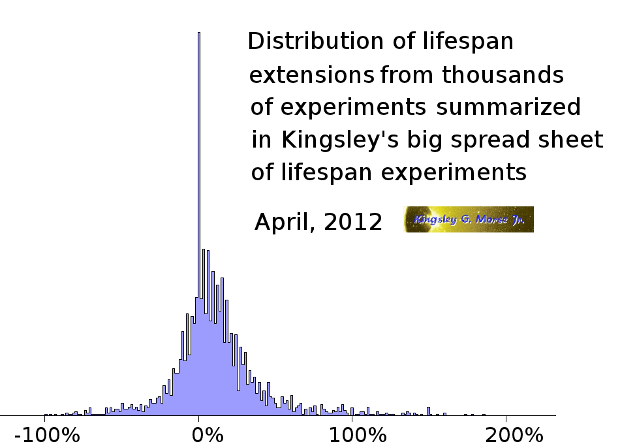A Histogram of Results from Life Span Studies
Kingsley G. Morse Jr. is one of the regulars at the Gerontology Research Group mailing list. He maintains a spreadsheet of all the life span studies in various organisms that he has been able to find, and is generally willing to sell that data at white paper rates, should you happen to be interested. He recently posted a histogram assembled from the study results, which I'm sure you'll agree is interesting:

The history of working to extend life in laboratory animals - and of studying effects on longevity and mortality in humans - is largely a big null result. Other than calorie restriction, the effects of which were first formally cataloged by scientists in the 1930s, all of the excitement shows up in the past twenty years or so. The successes are a tiny fraction of the studies that showed nothing, or showed a result well within the margin of error, or produced results that could not be replicated. In mammals, mostly mice, the bulk of studies that do extend life significantly fall in to the 15% to 30% life extension bracket - on a par with moderate to severe calorie restriction. Only a few methods have been demonstrated to reach beyond that point.
To a large degree this is because near everything tried to date has been a form of metabolic manipulation - change the operation of metabolism to slow the effective rate at which damage accrues to the organism. I would be surprised to see any great improvement in the length of life lived by laboratory animals until the research community changes strategy to focus on actually repairing and reversing the cellular and molecular damage that causes aging. The difference between slowing aging and repairing aging will be as night and day when it comes to the practical results that can be achieved.